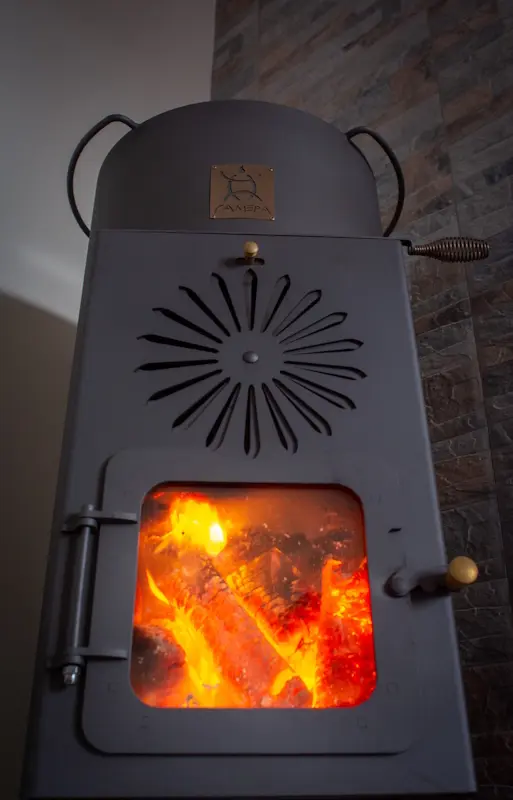How to use a rocket stove
How to Light a Rocket Stove
To start a fire in a rocket stove, you can use materials like nut shells, pine cones, and some paper as kindling. As shown in the image (if available), logs are placed at the bottom opening of the combustion chamber. The logs should be thick enough to burn well but not so thick that they completely block the entrance to the horizontal chamber.
Start by placing the kindling—nut shells and pine cones—on the bottom of the burning chamber, light it and put some bigger wood on top. Then, partially cover the opening with the lid, leaving about one-third of it open. This partial covering is especially important when the stove has a weak draft. For many rocket stove designs, it's ideal to close off between one-third to one-half of the opening at the wood feed spout.
Note that you don’t always need to use a lid; the stove can simply be filled with wood. However, when adding wood, using the lid to partially cover the opening is recommended. This helps restrict the open area, which increases the speed of the incoming air and the flow of flue gases. Faster airflow improves combustion and helps the fire burn more efficiently. It also prevents the fire from creeping up the wood feed tube.
Keep in mind, unlike traditional ovens, this setup does not reduce the amount of incoming air—it just increases its speed, which helps ignite the fire more effectively. However, if you cover too much of the opening, the stove can become starved for air. You’ll notice this right away by a muffled or weak burning sound—this means the stove is "drowning" and needs more airflow.
The intensity of combustion is controlled by changing the size of the firewood. For example, if we want a strong hot fire, use thinner wood. If you want a slower burning fire, simply use some thicker wood in the stove.
Eco briquettes are suitable fuel for rocket stove.
Rocket?
You will notice, that when the stove is lit well, and burning for some time, it will go into rocket mode.
At his point your stove and chimney are hot enough and you will hear the stove make a roaring sound.
Don't worry, it means that the secondary burn stage, where all the smoke is burned, is in full throttle.
Now your stove is burning at its most efficient
Condensation
A very unpleasant phenomenon is condensation of water vapor on the inside of the pipes. Brown dirty liquid that smells .Condensation occurs when we burn wet or very damp materials in combination with cool chimney. In principle it is possible to burn moist material but the stove must be lit and previously fired with dry wood and well heated pipes so as to prevent condensation. Condensation throughout the operation of the stove is a sign that we have wet wood, insufficient chimney draft or too long / complex system of chimney.
Cleaning and maintanance
It is recommended to remove ash from the Gamera daily. Best tool for that is wooden spoon. When the stove is lit it briefly accumulate more ash. When burning continuously in normal use there will remain very little ash and can be cleaned every few days.
At the bottom of the stove – inside the metal housing – with time accumulates fine ash. It is better to remove that at least once a year (at the end of the heating season). This is done through the opening for connection of the pipes. Some of this dust invades in the pipes and precipitated. They also should be cleaned at least once a year.
It is not recommended overloading the stove. When occurs (red glowing top plate) stop the refueling and open the lid for more air. Overheating can lead to distortions in the upper plate. Deformation is not dangerous, but it is inconvenient of you want to use a pan on top.. At the optimum temperature of the surface of the top plate must not exceed 450 degrees Celsius. Stove can be easily overheated if we load highly caloric fuel – dry wood, coal briquettes deep in the horizontal part of the camera. This option of loading (horizontal chamber) is used only for ignition at reduced thrust due to changes in weather conditions.
